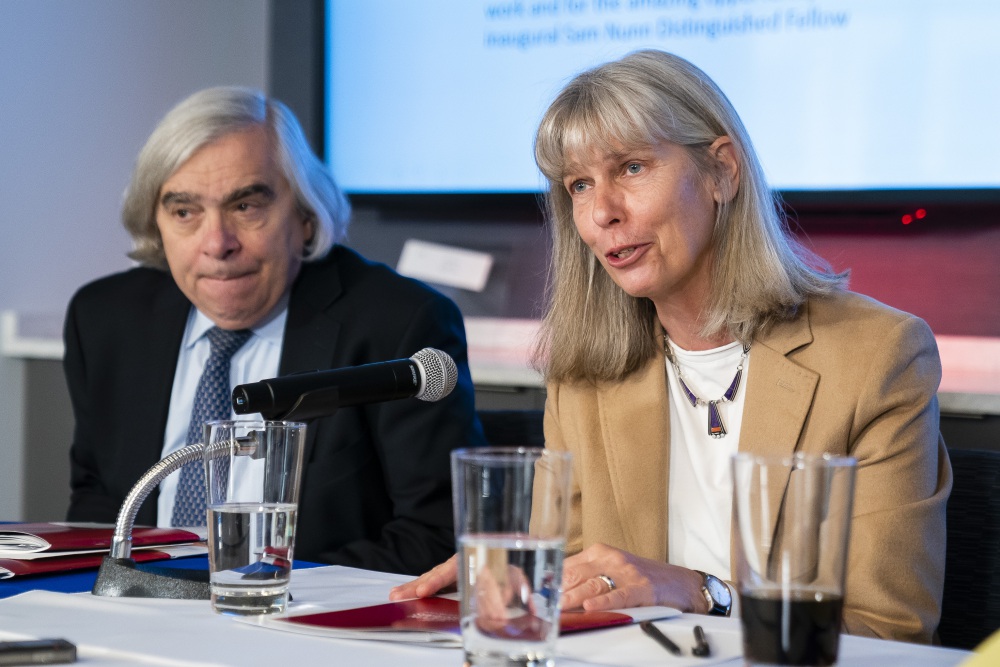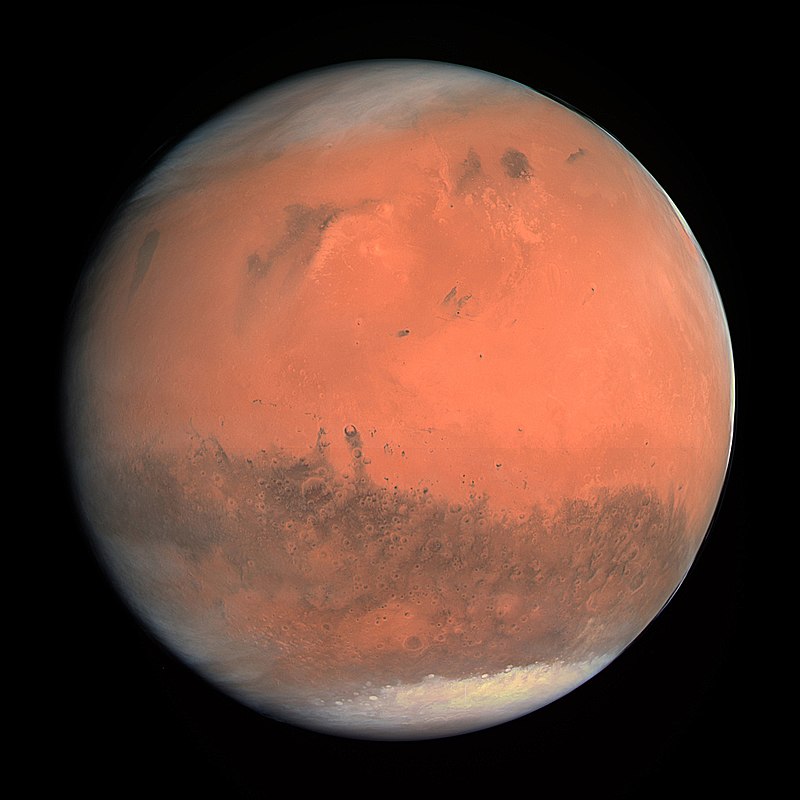
NTI Experts Present New Reports on New Russian Weapon Systems and their Implications
NTI Experts Present New Reports on New Russian Weapon Systems and their Implications
Atomic Pulse
This post was written by Kiley
McCormick, an intern with NTI’s Material Risk Management program. McCormick
will graduate in December from Bryn Mawr College with a dual major in political
science and Russian Studies. She has studied at Moscow International University
and is fluent in Russian.
When you hear “nuclear thermal propulsion”
to Mars, you might think Star Trek, not NASA and Roscosmos. But the term isn’t
out of sci-fi TV. The American and Russian space programs are trying to use
nuclear-powered technology to boldly venture where no man (or woman) has gone
before: Mars or the outer reaches of our solar system.
NASA and Roscosmos both have had Mars on
the agenda for some time, but they’re no longer talking rovers. Today, they’re
talking astronauts and cosmonauts kicking up red dust on the fourth planet.
This would be no mean feat. Mars is over 140 times farther from Earth than the
Moon, and a manned mission presents some serious engineering challenges. Using
a chemically propelled spacecraft, like what we used to land on the moon, would
take astronauts 1-2 years to reach the red planet, presenting a serious threat
to the health of the astronauts. Russia’s solution? The Transport and Energy
Module (TEM), a nuclear-propelled engine 20 times more powerful than
conventional chemical engines, enabling heavier crafts with greater
capabilities to travel farther and faster. The TEM is a ‘megawatt-class’
nuclear-propelled spacecraft project led by the Keldysh Research Center since
2009. Ground-based tests of the project’s cooling system took place in November
2018. That same month, Vladimir Koshlakov, head of the center, said there was
no timeline for when the rockets would be finished, but it was reported in
January 2019 that the first prototype of the module will be ready around 2023.
Staying at the cutting edge, NASA has been
working on its own Mars initiative and can draw on its long history of using
atomic energy in missions. NASA has previously sent a nuclear-powered rover,
Curiosity, to Mars and has worked with MIT to develop a nuclear-powered oxygen
generating instrument. This device would allow astronauts to breathe on Mars
while simultaneously generating the oxygen necessary to launch them back to
Earth.
During the Cold War, NASA partnered with
the U.S. Atomic Energy Commission in developing the Nuclear Engine for Rocket
Vehicle Application (NERVA) program. Within this program, reactors and rocket
engines were designed, built, and successfully ground tested from 1961 to 1972.
Now, the 60s are back in more ways than one as NASA again explores nuclear
thermal propulsion to send a manned mission to Mars through its Game Changing
Development initiative. Congress has committed $100 million for NASA to develop
nuclear thermal rocket engines and conduct a flight demonstration by 2024. Additionally, a new National Security
Presidential Memoranda was signed on August 20, 2019 that describes the process
the U.S. will use to safely launch spacecraft containing space nuclear systems.
Is this flurry of Martian activity in the
United States and Russia an opportunity to work together to establish an international
standard for safely launching nuclear systems into space? It is a compelling and relevant topic. The
expertise and technology developed in Roscosmos’ and NASA’s Martian programs
could easily complement each other. Charles Bolden, former Administrator of
NASA, referred to the International Space Station as an earlier example of
international cooperation that succeeded even at a time of political tension. And
while tensions may be too high to develop nuclear propulsions systems together,
perhaps working on the safety aspects that would benefit everyone on the planet
is a good place to start anew.
In a 2017 report, Pathways
to Cooperation, NTI and the Russia-based Center for Energy and Security
Studies offered a menu of potential cooperative projects in the nuclear sphere,
including the suggestion that “future spaceflight missions may require novel
nuclear technologies to power advanced propulsion and life-support systems” and
there may be opportunities for U.S.-Russian R&D cooperation. Lamenting that
“communication between scientists and technical experts in the U.S. and Russian
nuclear complexes—which dates back to the 1980s—has been frozen,” NTI Co-Chair
and then-CEO Sam
Nunn and former Russian Federation foreign minister Igor Ivanov wrote that
cooperation across any number of projects “would also allow the United States
and Russia to begin to rebuild the trust critical to putting bilateral relations
back on track.”
Although today’s political climate
presents enormous challenges, the United States has had a long and prolific
history of scientific partnership with Russia and the Soviet Union. Finding
challenging scientific projects that benefit mankind are compelling joint
activities, and the safety of nuclear systems certainly fits the bill. It might be the 23rd century before we’re
working together as closely as Captain Kirk and Ensign Chekov, but we’ll be
jetting off to Mars in nuclear-powered spaceships well before that, if
Roscosmos and NASA have anything to do with it.
Sign up for our newsletter to get the latest on nuclear and biological threats.
NTI Experts Present New Reports on New Russian Weapon Systems and their Implications
"It’s always difficult to adapt to new technologies, but the pace of development is so high that our organizations struggle to adapt."
NTI Seminar: A Stable Nuclear Future? Autonomous Systems, Artificial Intelligence and Strategic Stability with UPenn’s Michael C. Horowitz


